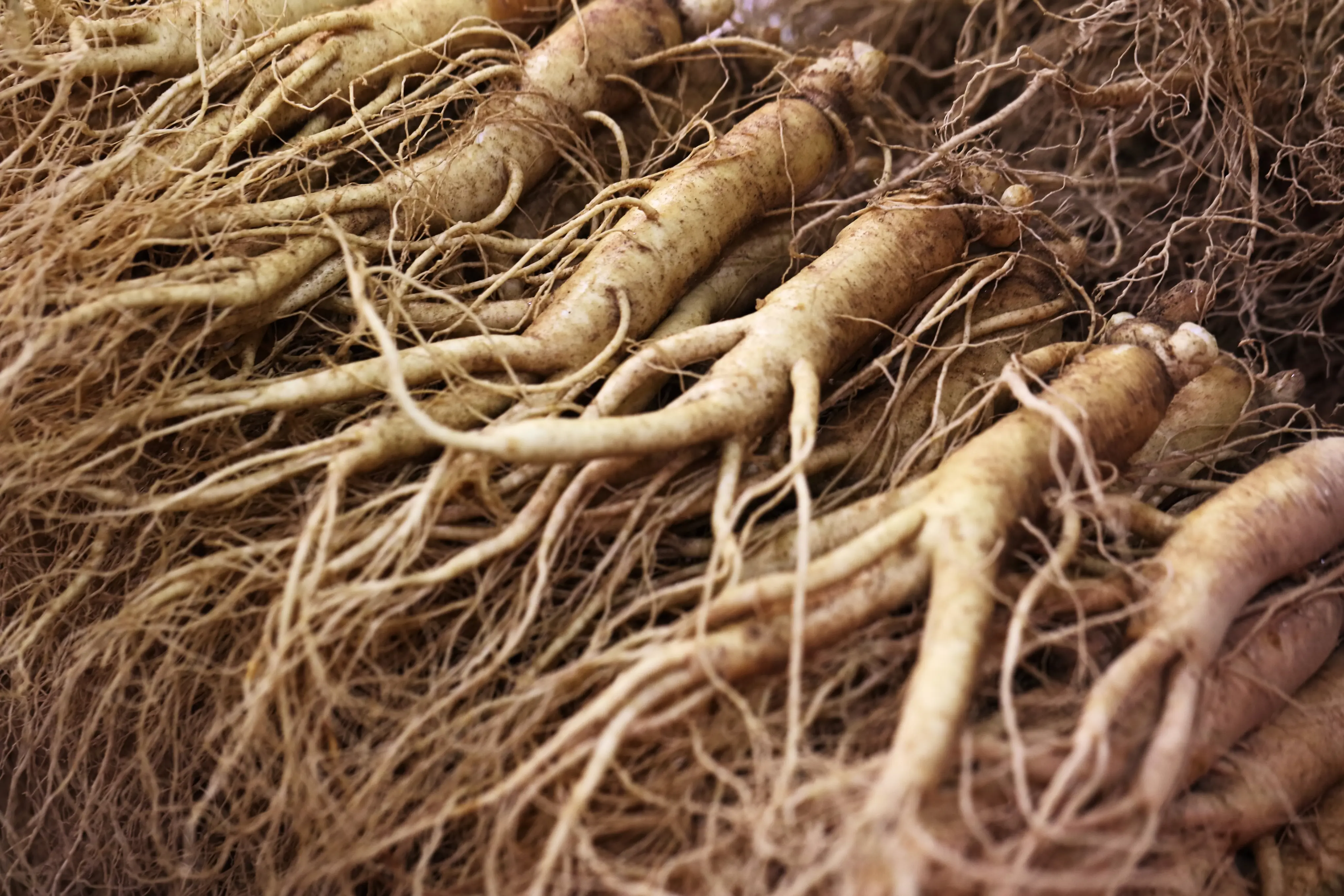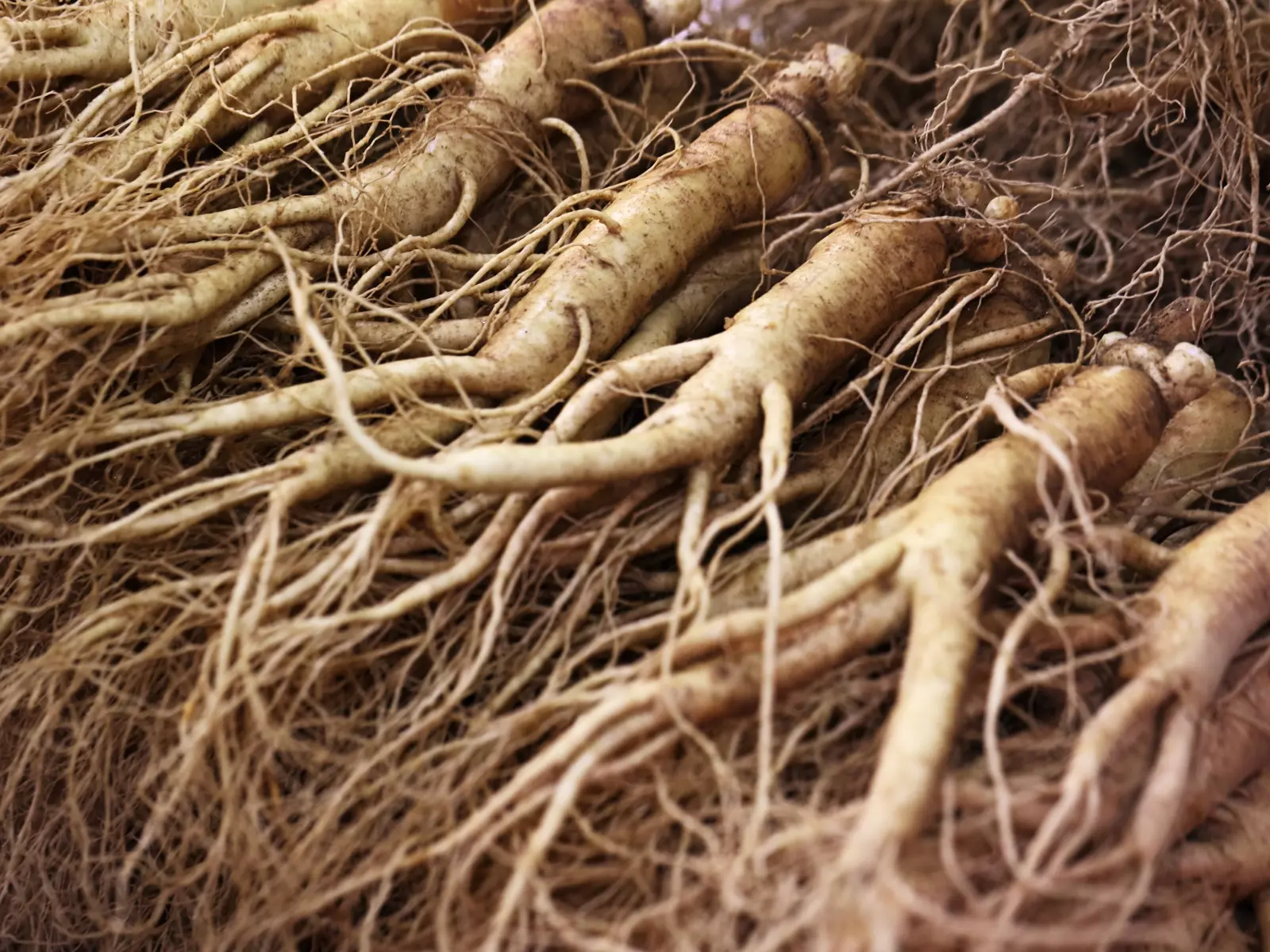
Ginseng (Panax ginseng)
Panax ginseng has been regarded as a tonic in Asia for thousands of years. In western medicine, ginseng root is used for states of weakness and exhaustion, fatigue, lack of concentration and during the recovery phase.
The root of the genuine ginseng (Panax ginseng C.A. Meyer) has for around 2000 years been used in traditional Chinese medicine (TCM) to strengthen life energy. The ginseng root had also become known in Europe since the 17th century. It was used by kings and nobles and was extremely popular at the court of Louis the Fourteenth, where it was considered a life-prolonging and potency-promoting agent. Also the genus name Panax shows the major healing effect of the plant that was attributed to it at that time: The name is derived from the ancient Greek and means something like panacea. Find out more about the use of ginseng as a medicinal plant and its effect against fatigue and declining performance in this article.
Occurrence and distribution of ginseng
Genuine ginseng (Panax ginseng C.A. Meyer) belongs to the Araliaceae family. It is found wild in numerous regions of Asia. These include, among others, north-eastern China, northern Korea and some southern areas of Russia. The plant grows mainly in higher mixed and deciduous forests. It is now also cultivated in many places because of its healing properties.
Large plantations can be found, for example, in Japan, China, Ukraine, Korea and Australia, but also in Central Europe (among others in Switzerland, Germany and Austria). For commercial cultivation, cultivars are mostly used, which have been further developed by growers and differ more or less from the wild form. Nevertheless, the cultivation of Panax ginseng is still challenging today. Many steps have to be performed by hand. Protection from sun and pests is required. In addition, it is slow growing. The germination period is two years. After that, the root must grow for several years before it can be harvested.
Appearance of ginseng
The ginseng plant grows between 30 and 60 centimetres high. It grows upright and has leaf whorls with five elongated leaves each. The edges of the leaves are serrated. Depending on the size of the plant, the leaves grow between 5 and 15 centimetres long. The flowering period lasts from June to July. The flowers are small, of greenish colour and stand together in spherical umbels. Round red fruits the size of a pea develop from the flowers.
What makes ginseng so well-known and popular in Asia and also in our country, however, can be found underground. The medically usable ginseng root is spindle-shaped and divides at the top. As a result, it sometimes resembles the shape of a human being. Numerous myths arose about the meaning of this shape: In Asia, it is considered a miracle plant, while in this country it – like the native mandrake, which has similar roots – was at times associated with magic and witchcraft.
History and tradition of ginseng
In Asia, the ginseng root has symbolised health and a long life for millennia. Even today it is one of the most widely used medicinal plants in China. It is credited with numerous positive effects on mind and body. At times, the root was so coveted that it was traded at the price of gold and its application was reserved for kings and nobles. Sailors brought ginseng roots to Europe from the 17th century onwards. It has since become known to us as a medicinal plant and herbal tonic. In Asia, however, it is used more widely and is also used in part as food, for example in the traditional Korean dish Samgyetang, a chicken soup with ginseng. Candied or fried ginseng roots and ginseng drinks are also part of the menu in northern China and South Korea.
Ingredients and effect of ginseng roots
There are certain triterpene saponins in the root of Panax ginseng, which occur exclusively in the genus Panax. These active ingredients are called ginsenosides. So far, about 30 different ginsenosides have been identified. Researchers believe that these are largely responsible for the effect of the root. In addition, the roots also contain essential oils and other ingredients, such as peptidoglycans, in smaller amounts.
Dried roots or ginseng tea can be used for medical applications. Dosage and active ingredient content vary greatly in these preparations or are not known. Standardised extracts, on the other hand, as found in finished medicines, have a constant content of active ingredients.
Both white and red ginseng are offered in the trade. While the roots both come from the same plant, they are processed in different ways. White ginseng is washed and then dried, so it retains its natural colour. In the case of red ginseng, the roots are additionally exposed to hot water vapour. In the process, a caramelisation of sugar takes place, which leads to a reddish colour. The heat treatment preserves the root, but the content of ginsenosides decreases.
Ginseng as a medicine
In traditional Chinese medicine and Asian folk medicine, the root of the Panax ginseng is still considered a real panacea. Panax ginseng is said to slow ageing and help against numerous diseases.
In western medicine, ginseng root preparations are approved for increased performance and concentration. They can work against fatigue, exhaustion and lack of energy. In convalescence, i.e. in the recovery phase, ginseng root can be used to support recovery. However, you should always consult a doctor for permanent fatigue or increasing symptoms in order to rule out serious illnesses.
This is general information. For individual advice, please contact a specialist.

